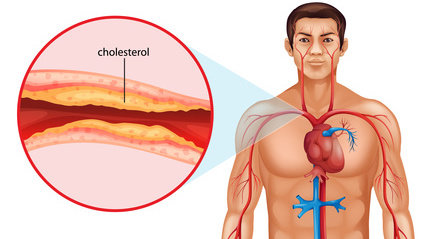Normal Levels Of Cholesterol can be attain by proper cholesterol management.

Normal levels of cholesterol in the body is vital to your health. When the blood has high levels of cholesterol, it poses health threats such as heart disease, strokes, impotence, high blood pressure, gallstones, and a loss of mental acuity.
It is important to know overall that all cholesterol is not bad. Your body needs it moderately for cell function, nerves and hormones. Furthermore it is a vital part of all the cells in the body; and not having it will make your life impossible.
If you have high levels of it, normal cholesterol levels can be attain through cholesterol management. This is consisted of managing what you eat and your level of daily activity such as exercise.
cholesterol numbers chart
| Total cholesterol (U.S. and some other countries) | Total cholesterol* (Canada and most of Europe) | |
|---|---|---|
| Below 200 mg/dL | Below 5.2 mmol/L | Desirable |
| 200-239 mg/dL | 5.2-6.2 mmol/L | Borderline high |
| 240 mg/dL and above | Above 6.2 mmol/L | High |
| LDL cholesterol (U.S. and some other countries) | LDL cholesterol* (Canada and most of Europe) | |
|---|---|---|
| Below 70 mg/dL | Below 1.8 mmol/L | Ideal for people at very high risk of heart disease |
| Below 100 mg/dL | Below 2.6 mmol/L | Ideal for people at risk of heart disease |
| 100-129 mg/dL | 2.6-3.3 mmol/L | Near ideal |
| 130-159 mg/dL | 3.4-4.1 mmol/L | Borderline high |
| 160-189 mg/dL | 4.1-4.9 mmol/L | High |
| 190 mg/dL and above | Above 4.9 mmol/L | Very high |
| HDL cholesterol (U.S. and some other countries) | HDL cholesterol* (Canada and most of Europe) | |
|---|---|---|
| Below 40 mg/dL (men) Below 50 mg/dL (women) |
Below 1 mmol/L (men) Below 1.3 mmol/L (women) |
Poor |
| 40-49 mg/dL (men) 50-59 mg/dL (women) |
1-1.3 mmol/L (men) 1.3-1.5 mmol/L (women) |
Better |
| 60 mg/dL and above | 1.6 mmol/L and above | Best |
| Triglycerides (U.S. and some other countries) | Triglycerides* (Canada and most of Europe) | |
|---|---|---|
| Below 150 mg/dL | Below 1.7 mmol/L | Desirable |
| 150-199 mg/dL | 1.7-2.2 mmol/L | Borderline high |
| 200-499 mg/dL | 2.3-5.6 mmol/L | High |
| 500 mg/dL and above | Above 5.6 mmol/L and above | Very high |
chart reference and source MayoClinic.org
The circulation of cholesterol occurs in the body when a substances call lipoproteins carries it in the blood. One type of cholesterol call low-density- lipoprotein (LDL) distributes cholesterol from the liver where it is birthed to the cells that need it.
Furthermore another type of lipoprotein call high-density-lipoproteins (HDL) carries the oversupply of cholesterol from the cells back to the liver. There it is then broken down and expel from the body or reprocessed.
The lipoproteins
under normal conditions keep normal levels of cholesterol balanced in the body.
But this precisely set system can be exhaust when the body produces excess
cholesterol than HDL can get rid of.
Next the cells grab what is needed; the remaining HDLs extract what they can, and the additional remains in the blood.
Furthermore if the cholesterol (LDL) oxidizes and bond to the artery walls, it establishes the stage for inflammation of the arteries. This inveterate inflammation adds to the accumulation and placement of cholesterol and plaque on the inner walls of the arteries.
This is what you call build up or the narrowing of the arteries. It’s the first stage of heart disease. Therefore having normal levels of cholesterol in the blood is vital to your health.
return from normal levels of cholesterol to benefits of eating healthy
New! Comments
Have your say about what you just read! Leave me a comment in the box below.